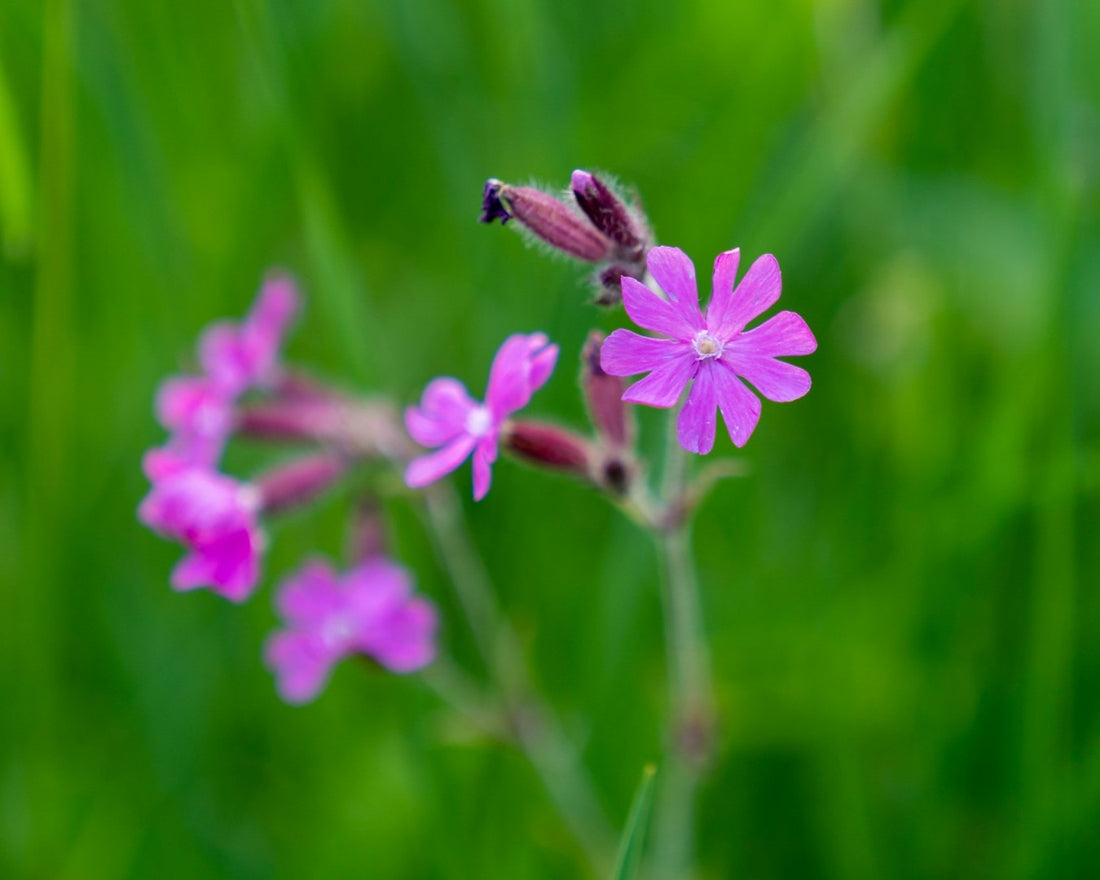Spring is right around the corner and one of the best parts of spring is the flower blooms that show off early to brighten the heart. These beautiful plants not only add a splash of color to your yard but also provide valuable resources for pollinators. From delicate wildflowers to showy shrubs, these plants are sure to bring joy and beauty to your outdoor space.
Native Flowering Perennials
Wild Columbine (Aquilegia canadensis)
One of the best flowers for attracting hummingbirds to your garden is wild columbine. With its showy tubular blooms and bright red color, this native perennial is a favorite amongst pollinators. It also among one of the first flowering plants of spring. It prefers the partial or full shade and can be grown in USDA Zones 3-8.
Phlox (Phlox species)
These native perennials produce pretty clouds of white, purple, or blue color for weeks on end. There are groundcover varieties as well as taller ones. All phlox are beautiful and most are early bloomers. They thrive in dappled shade or partial sun. Most phlox varieties are hardy to USDA Zones 3-8. Look for ones native to your climate and region.
Wild Pinks/Catchfly (Silene caroliniana)
A fantastic native alternative to Dianthus, Wild Pinks brighten up any area of your garden with their long-blooming, deep pink flowers. These compact and versatile beauties can withstand periods of rain or drought and are attractive to both butterflies and hummingbirds. Hardy to USDA Zones 4-7.
Bluestar (Amsonia species)
Bluestars are native perennials that features silvery blue blooms in April-May. They provide green foliage in the summer and turn into a nice shade of yellow in the fall. These unique plants grow up to 3 feet tall and prefer to be planted in groupings in medium moisture, well-drained soil in full sun to light shade. The hardiness varies by species; there are native varieties across North America.
Native Spring-Blooming Shrubs
Rhododendrons and Azaleas (Rhododendron sp.)
Rhododendrons and Azaleas are classic spring flowers that add stunning beauty to gardens. Rhododendrons and azaleas are native to a wide range of USDA Hardiness Zones, making it easy to find a variety that suits your region.
Red Chokeberry (Aronia arbutifolia)
Red Chokeberry is a shrub with delicate white flowers and a fabulous fall display of crimson red or red-orange foliage. During autumn, it also produces clusters of bright red berries, which are a favorite among winter birds. Known for its minimal maintenance and high tolerance to drought, this shrub is hardy to USDA Zones 4-9.
Native Spring-Blooming Trees
Serviceberry (Amelanchier canadensis)
The mature height for Serviceberry is 10-15 feet -- this slightly smaller canopy makes it perfect for landscapes of any scale. In addition to its beautiful flowers, serviceberry trees attract birds to your garden with their small, edible blue berries. They can be grown in USDA Zones 2-7.
Pagoda Dogwood (Cornus alternifolia)
Pagoda Dogwood is easily one of the most attractive native trees you can add to your landscape. Its creamy white, feathery blossoms create excellent contrast with its large, ovate leaves. This tree is known for its eye-catching horizontal branching and its stunning show of fall colors. Pagoda Dogwood attracts birds and butterflies during spring and summer. It thrives in shade and part-shade locations and is hardy to USDA Zones 4-9.
White Fringe Tree (Chionathus virginicus)
This fringe tree features delicately fragrant, creamy-white, fringe-like petals that add a soft, feathery touch to your landscape. With a mature height of 12-18 feet and a width of up to 12-20 feet, this tree makes a dramatic statement. It also attracts scads of butterflies and birds and is highly tolerant of air pollution. The white fringe tree grows best in full sun to part shade and prefers moist, fertile soil. It is hardy to USDA Zones 3-9.



